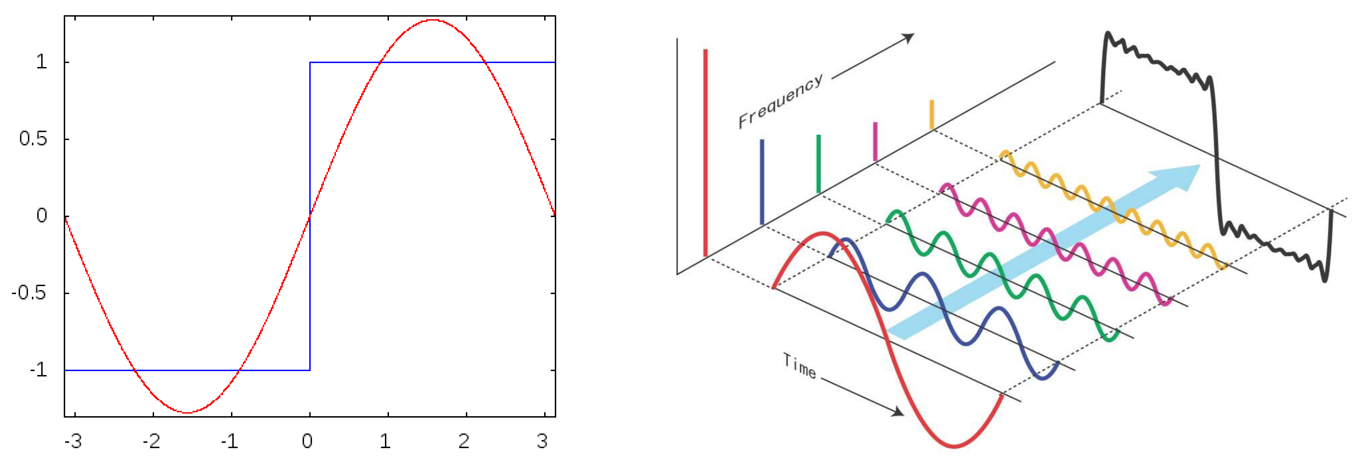Delta function
The Fourier transform of the Dirac delta function δ(t−t0) is given by
F{δ(t−t0)}=∫−∞∞δ(t−t0)exp(−jωt)dt=exp(−jωt0)
That means, the Fourier transform of δ(t−t0) has a fixed norm 1 and t0 only affects its phase.
If we express the result by f=2πω, we will have F{δ(t−t0)}=exp(−j2πft0).
To generalize, we have
F{x(t)}=X(ω)⟹F{x(t−t0)}=exp(−jωt0)X(ω)
and
F{x(t)}=X(ω)⟹F{exp(jω0t)x(t−t0)}=X(ω−ω0)
Square Waves
 Consider a square wave signal with the following representation
Consider a square wave signal with the following representation
x(t+NT)=⎩⎨⎧1,0,∣t∣<T1T1<∣t∣<2T,N=0,1,2,…
We assume the Fourier Series is x(t)=k=−∞∑∞akexp(jkω0t) where ω0=T2π, then we have
a0=T1∫−T/2T/2x(t)dt=T1∫−T1T11dt=T2T1
and
ak=T1∫−T/2T/2x(t)exp(jkω0t)dt=T1∫−T1T1exp(jkω0t)dt=−jkω0T1[exp(−jkω0T1)−exp(jkω0T1)]=kω0T2sin(kω0T1)=kπsin(kω0T1)
Using Sinc function, we can rewrite ak as
ak=kπsin(kω0T1)=T2T1sinc(kω0T1)=T2T1sinc(2kπTT1)
If we let λ=T2T1 be valid length of the square signal, we can just have ak=λsinc(λkπ)
 Consider a square wave signal with the following representation
Consider a square wave signal with the following representation